5 guitar tricks to learn from Johann Sebastian Bach
Yes, the classical composer can revolutionise your playing
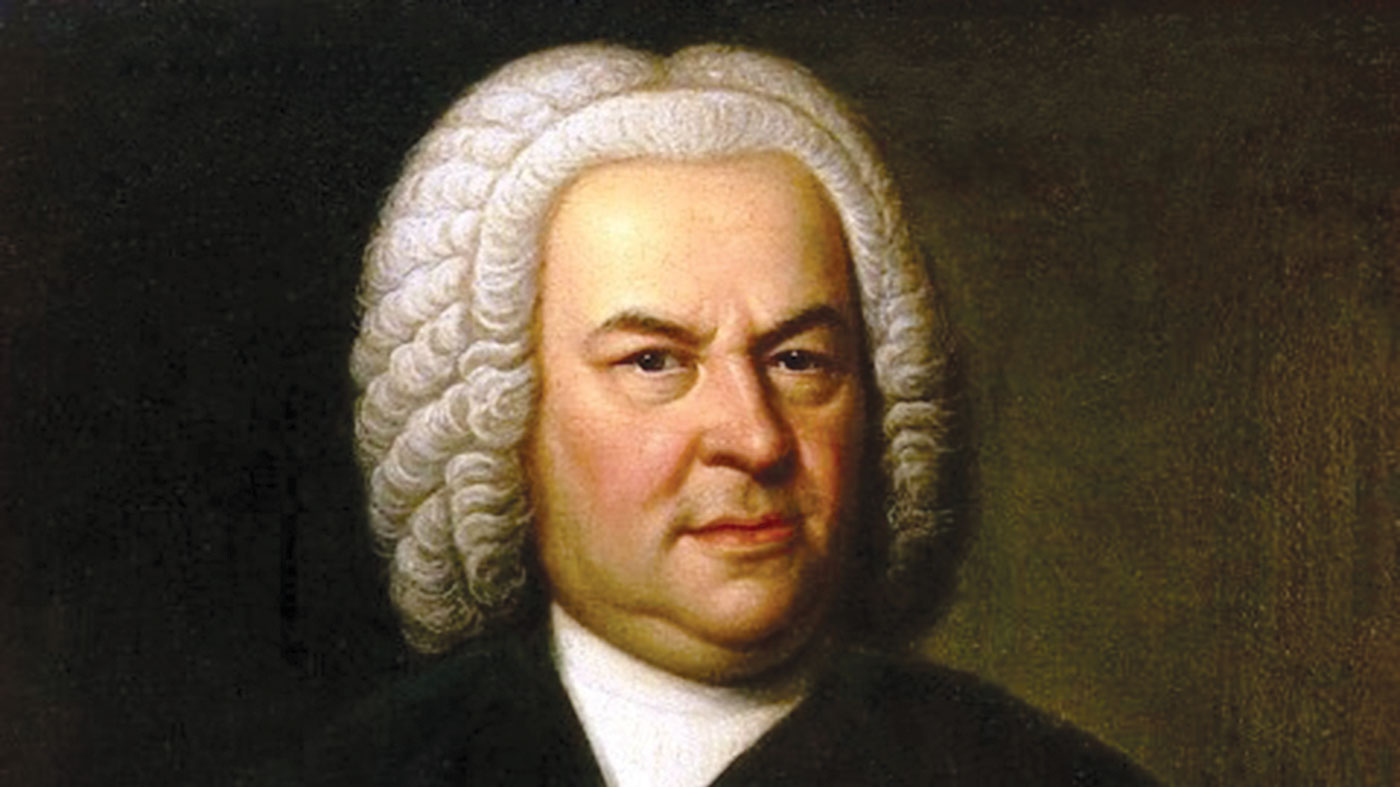
Johann Sebastian Bach is - obviously - a titan in the world of music. And that’s all music.
His influence and legacy straddles everything from classical and jazz to rock, metal and pop.
Tracks such as Procul Harum’s Whiter Shade Of Pale, The Beach Boys’ Lady Lynda, The Beatles’ Penny Lane (trumpet solo), Emerson, Lake & Palmer’s The Only Way, Jethro Tull’s Bourrée and lots of music by Deep Purple, Yngwie Malmsteen and all the neo-classical rockers simply would not have existed in the same form without him.
Other iconic musicians and composers who acknowledge a debt to him include Beethoven, Brahms, Chopin, Liszt, Mendelssohn, Mozart, Rachmaninoff, Schoenberg, Arvo Part, Bill Evans, Dave Brubeck, Paul McCartney, Paul Simon - this impressive list could go on and on!
Bach played many instruments including the organ, harpsichord, clavichord, violin and viola. Of all these instruments, it’s likely that the organ and viola were his favourites. He also preferred to play the viola over the violin in ensembles because it put him ‘in the centre of the harmony’.
There is a massive amount to be learned from Bach and so we take a look at just a few ideas - however, do bear in mind, these only really scratch the surface! Not only is playing Bach on guitar fun, it also poses a rewarding challenge! Here are my examples…
Examples 1 & 2
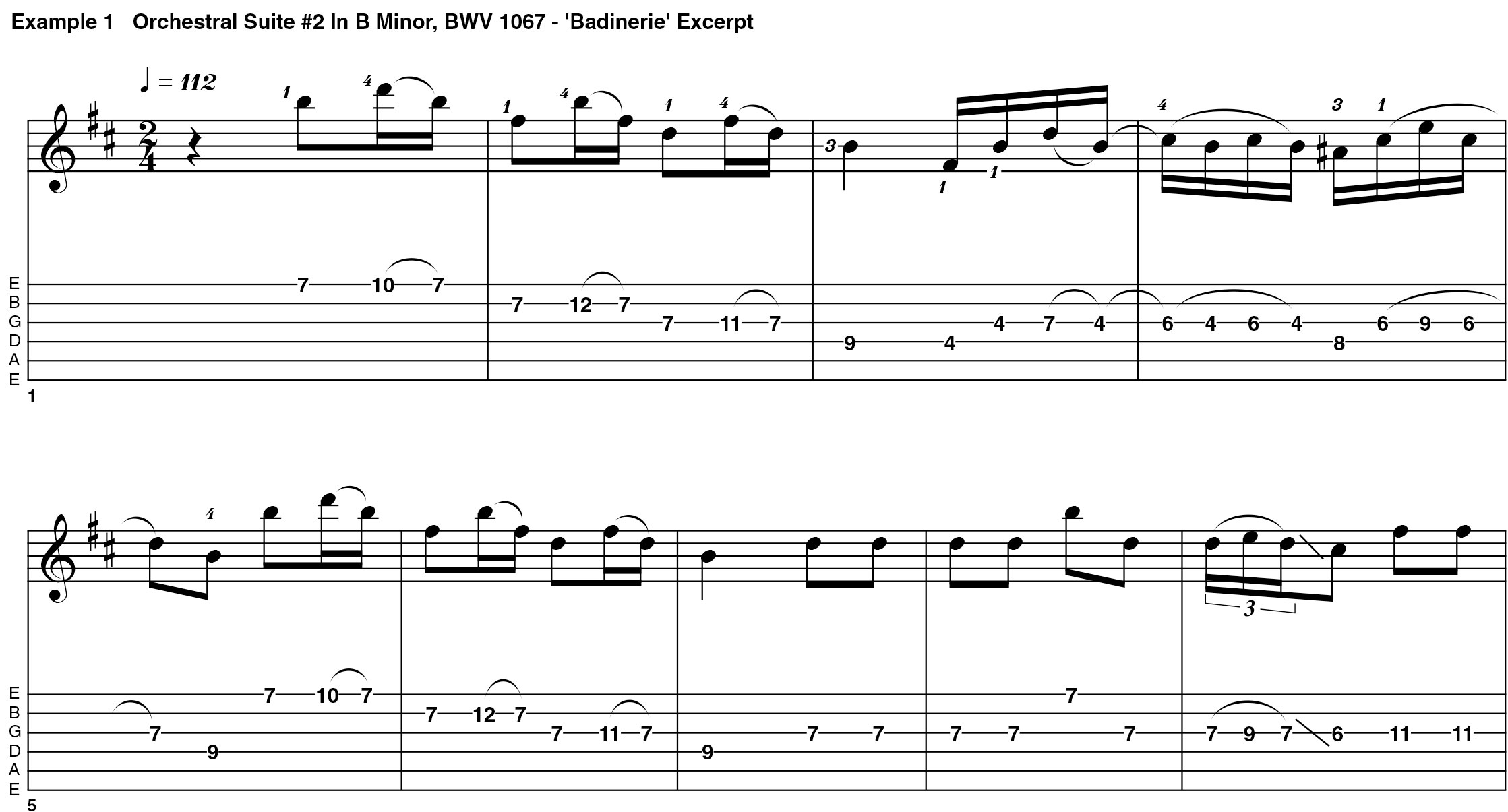
Badinerie From Suite No. 2 In B Minor [Excerpt 1]
Get the MusicRadar Newsletter
Want all the hottest music and gear news, reviews, deals, features and more, direct to your inbox? Sign up here.
This is the popular and well known intro taken from the Badinerie, which is part of Bach’s Suite No. 2 in B minor. To my mind, it is both melodic and technically interesting. Yngwie Malmsteen often quotes this piece in his unaccompanied solo during his live shows. Originally played on violin an octave higher than shown, here it is still effective when played in this lower register.
The opening section involves a rhythmically sequenced B minor arpeggio idea that could be played ‘in position’ across the strings. However, you get better note separation if you use the ‘stretch’ fingering as shown here. The following phrases in bars 3-4 melodically outline the change from Bm (im) to F# (V) and back before returning again to the main theme and subsequent variations.
One of the often-cited aspects of Bach’s music is that it sounds good played at pretty much any tempo. Therefore, if you find this difficult to play at the suggested tempo, try playing it slower, but still metrically, and if desired, then just build up the speed gradually over time.
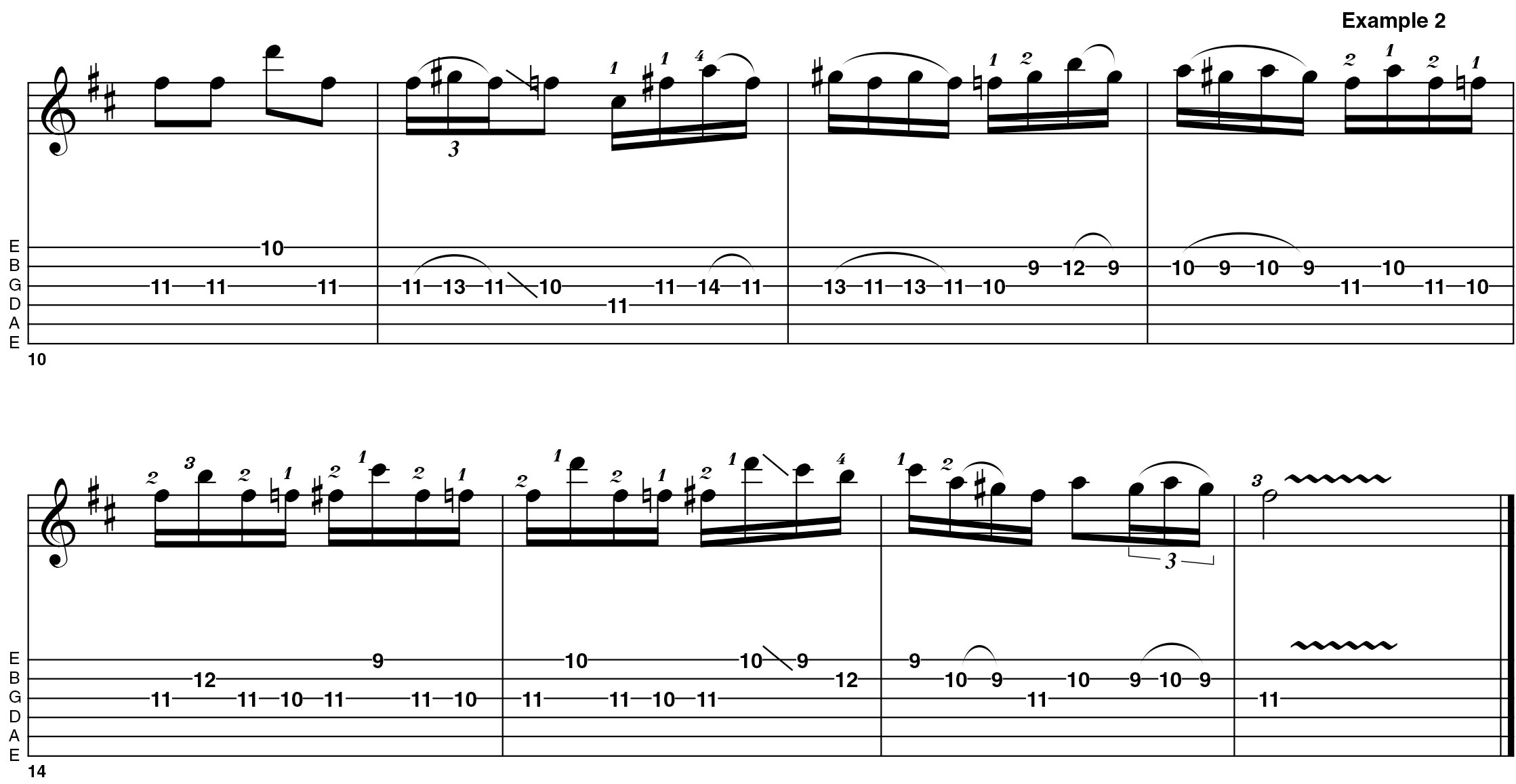
Badinerie From Suite No. 2 In B minor [Excerpt 2*]
Pedal tone ide as abound in baroque music and Bach was masterfully inventive in the myriad ways that he used them. In this example we have a ‘motif’-based idea that uses the three notes F, F#, F in-between each ascending pedal tone note (B, C#, D).
This is then followed by a short melodic phrase that takes us back to the 5th (F#). If you are not used to this sort of idea it can seem awkward at first, especially for the fretting hand. It’s worth the extra effort it will take to master it, though. After playing this section it’s a good idea to come up with other similar phrases of your own invention over different chord types etc.
Example 3
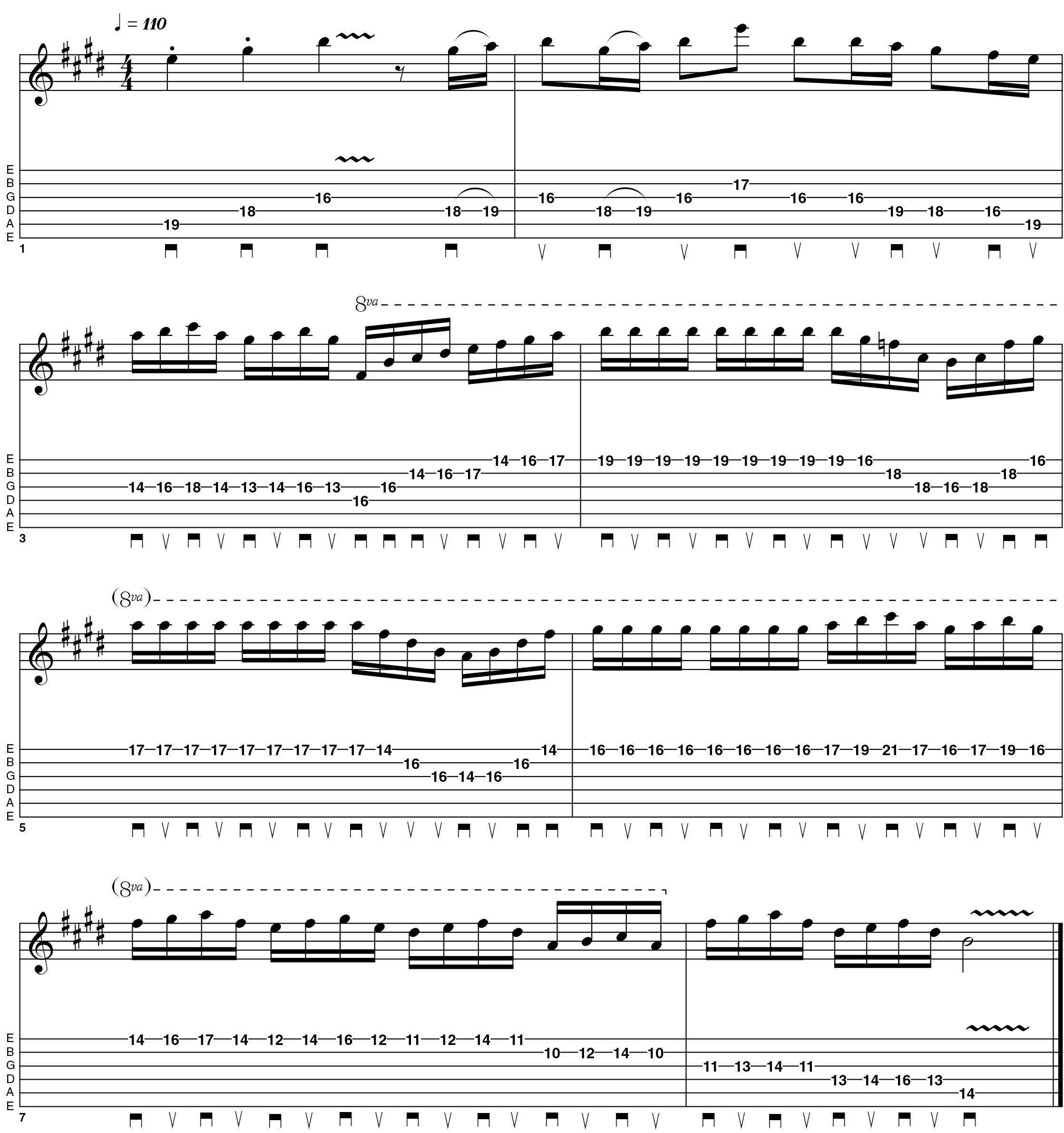
Violin Concerto In E major - Allegro [Excerpt]
Taken from another of Bach’s ‘greatest hits’, this intro section - which this time is arranged in the higher/correct ‘violin’ register - kicks off with a nicely ornamented E major arpeggio phrase - bars 1-2. This is then followed for the remainder of the excerpt by a mixture of scale sequence, arpeggio and repeated note sections.
Notice how the repeated note sections function as accompaniment for the other violin parts. This melodic interplay between the instrumental parts is vital in ensemble music such as this. I would suggest you aim to play the part as evenly and metrically as you can throughout. I have given some suggested picking indications - these include some mini-sweeps on the dominant arpeggios in bars 4 and 5. Try my suggestions and amend them to suit.
Example 4 and 5
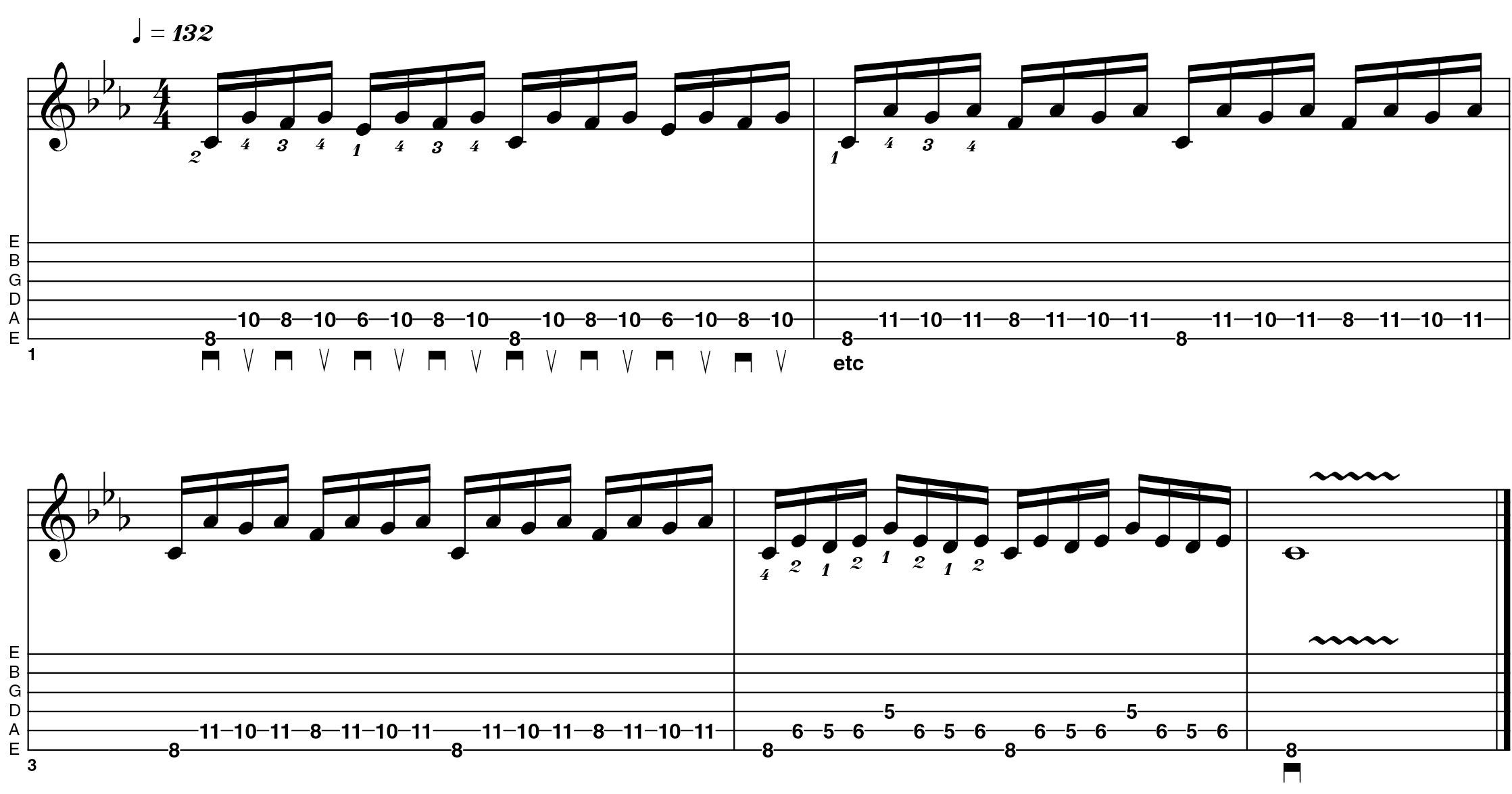
Prelude In C Minor - Left-Hand Part
As this excerpt was originally composed and intended to be played on keyboard, I have split each hand into two parts as seen in examples 4 and 5. This example is the 16th note left-hand bassline part. At the intended 132bpm tempo, this should offer a nice alternate picking workout. Also, the nature of the sequence will also give your fretting hand fingers a bit of a test as well. To keep it cleaner I recommend using a little pick-hand muting wherever you feel it is appropriate.
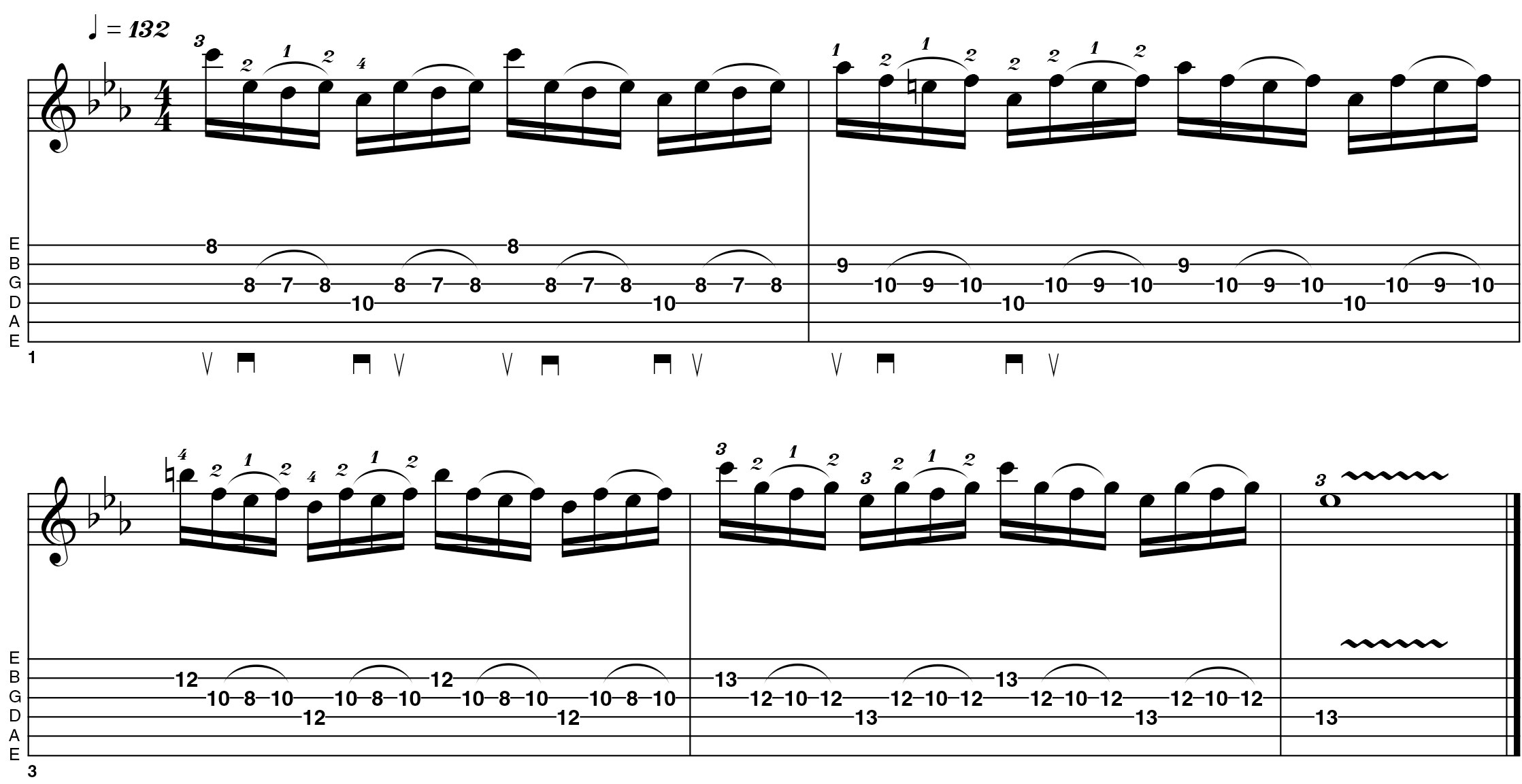
Right-Hand Part
One of the things I enjoy when arranging classical pieces for guitar is the vast number of totally ‘un-guitaristic’ fingerings and ideas you can come across - we certainly aren’t in pentatonic/blues scale’ land anymore here that’s for sure! Furthermore, you can often tell when a particular guitarist has been influenced by or also plays other instruments - particularly keyboards. Take Edward Van Halen for example - he had a classical piano upbringing and it shows in his music. This particular section is a real fretting-hand challenge. As always, the best advice I can offer is to memorise the notes and then work them up to speed, as and when it feels comfortable to do so. You can also record yourself playing each part over the supplied backing tracks to put your playing accuracy under the microscope.









